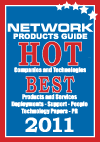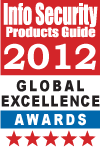This is Part Two of our February Feature of the Month series. Last week, we honored the all-new Access Point Name (APN) feature in NCP’s entry and enterprise IPsec VPN clients.
Enterprises today are facing significant challenges related to remote computing due to their increasingly fragmented geographies. For instance, companies are not only contending with how to enable automated roaming between their solutions on premises and remote hotspots, but they are also responsible for making sure this seamless roaming is secure for employees working off-site.
To meet these industry needs, NCP engineering has enhanced its client suite to support integrated 3G cards, which ensure secure network connections for mobile workers when used in conjunction with the NCP Secure Enterprise VPN Server. NCP has combined 3G / 4G and VPN connection setup into a single, graphical user interface, simplifying the installation and deployment processes for both IT personnel and individual users.
Additionally, the NCP Secure Enterprise Client allows devices to automatically transition between a variety of communication mediums, including Wi-Fi, xDSL, LAN, ISDN and WWAN, making it easy for users to connect to their corporate networks from any location. Since the solution dynamically redirects the VPN tunnel without disrupting mobile computing sessions, employees are guaranteed uninterrupted connections to their networks.
Beyond that, for enhanced protection, the solution automatically recognizes secure and insecure networks to connect to while users are roaming. With its Friendly Net Detection feature, the IPsec VPN client then activates the appropriate firewall and security policies without the end user needing to lift a finger.
Want to learn more about the NCP Secure Enterprise Client’s integrated support of 3G / LTE cards? Additional information can be found here.






February Feature of the Month: Integrated Support for 3G / LTE Cards, Part Two
Posted: February 21, 2013 in Industry Commentary, IPsec, IT policy, Mobile, VPN, Wi-FiTags: 3G, IPsec, mobile, Mobile Security, seamless roaming, VPNs, Wi-Fi
This is Part Two of our February Feature of the Month series. Last week, we honored the all-new Access Point Name (APN) feature in NCP’s entry and enterprise IPsec VPN clients.
Enterprises today are facing significant challenges related to remote computing due to their increasingly fragmented geographies. For instance, companies are not only contending with how to enable automated roaming between their solutions on premises and remote hotspots, but they are also responsible for making sure this seamless roaming is secure for employees working off-site.
To meet these industry needs, NCP engineering has enhanced its client suite to support integrated 3G cards, which ensure secure network connections for mobile workers when used in conjunction with the NCP Secure Enterprise VPN Server. NCP has combined 3G / 4G and VPN connection setup into a single, graphical user interface, simplifying the installation and deployment processes for both IT personnel and individual users.
Additionally, the NCP Secure Enterprise Client allows devices to automatically transition between a variety of communication mediums, including Wi-Fi, xDSL, LAN, ISDN and WWAN, making it easy for users to connect to their corporate networks from any location. Since the solution dynamically redirects the VPN tunnel without disrupting mobile computing sessions, employees are guaranteed uninterrupted connections to their networks.
Beyond that, for enhanced protection, the solution automatically recognizes secure and insecure networks to connect to while users are roaming. With its Friendly Net Detection feature, the IPsec VPN client then activates the appropriate firewall and security policies without the end user needing to lift a finger.
Want to learn more about the NCP Secure Enterprise Client’s integrated support of 3G / LTE cards? Additional information can be found here.
Share this:
Related